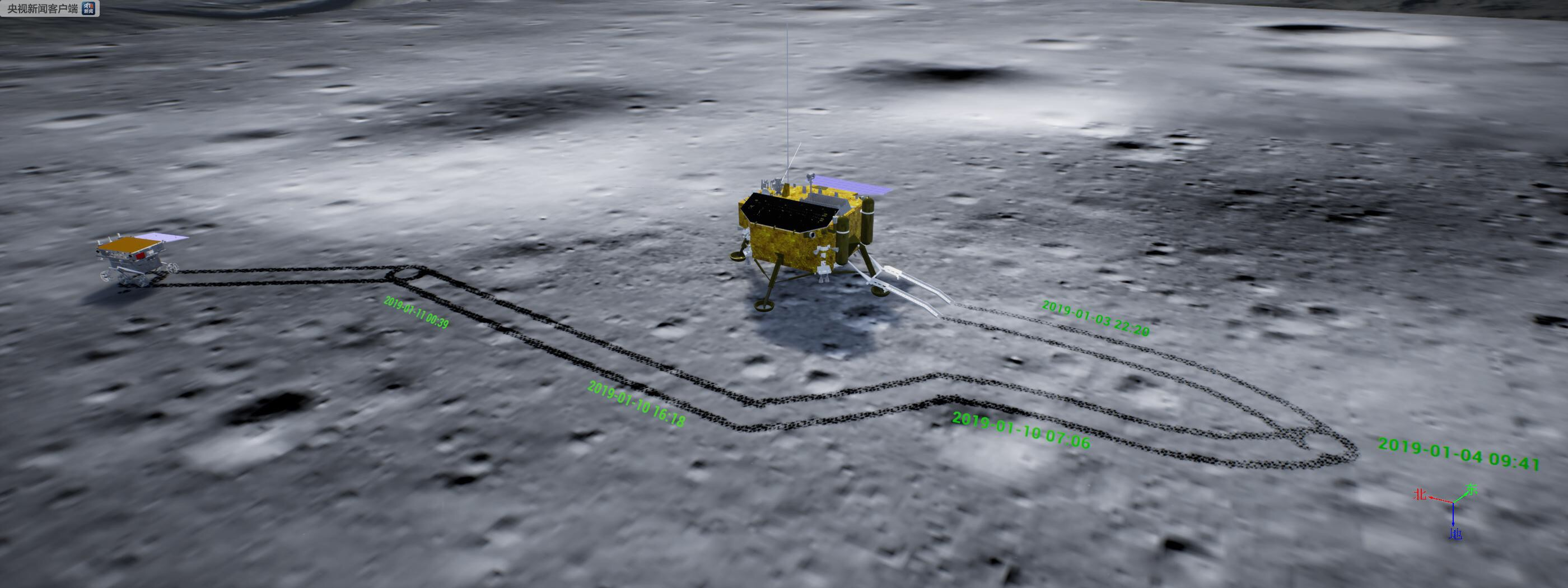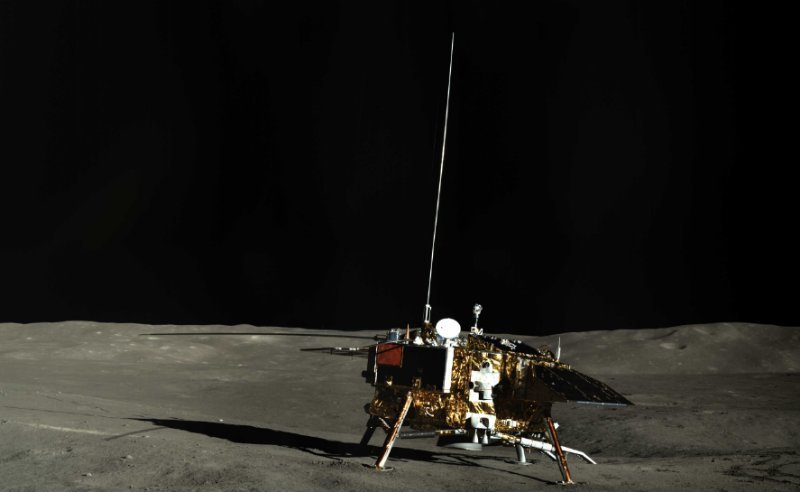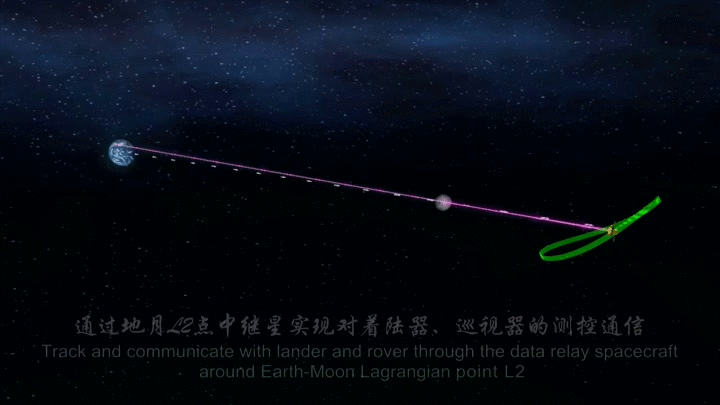Video of the descent of the rover "Yuytu-2", its first meters on the surface of the moon. Two week sleep on the moon is over

Onboard video of the landing of the rover "Yuytu-2" ("Jade Rabbit 2").
The modules of the Chang'e-4 station and the equipment of the Yuuta-2 rover successfully “woke up” after a two-week sleep, which turned out to be colder than the calculated one (-190 ° C against the expected -170 ° C).
Updated - added photos of “Chang'e-4 ″, made by a camera from the rover“ Yuytu-2 ″, added a scheme of communication between the modules and the MCC.
In the continuation of this (the first part) and this (the second part) publications.
First, a little late, but very interesting historical moments.
Video - the rover "Yuytu-2" leaves the "Chang'e-4":
Video - the first meters of the movement of the rover "Yuytu-2" on the surface of the moon:
A video of the landing of the Chang'e-4 vehicle and a comparative analysis of its landing site with maps of the lunar surface:
The route of the “Yuytu-2” rover before falling into hibernation ( when opening the picture in a separate window, you can see the time frame on the sections of the rover’s movement):

According to the tweet of China Global Television Network , January 31, 2019 the moon rover "Yuytu-2" successfully "wake up" after its first moon night.
Two modules successfully withstood the test of an extremely low-temperature environment on the far side of the moon. In accordance with the calculated data, they autonomously emerged from the "lunar night mode".
The main equipment of the apparatuses was connected in series, in accordance with the prescribed procedure, all the components of the apparatuses successfully passed the test of the first moonlit night, which confirmed the internal testing of the onboard systems.
At present, the Yuytu-2 lunar rover is located approximately 18 meters north-west of the Chang'e-4 landing gear (landing area at 177.6 degrees south of the moon).
New photos of the Chang'e-4 module, taken with a camera from the Yuytu-2 rover:


Both lunar devices operate in normal mode, consistently exchanging data with the Beijing Center for Aerospace Control, using the Tseuqiao satellite transponder.
The animation below shows how to transfer data from the back of the moon.


Communication scheme of the project elements:

According to the data from the monitoring logs of the temperature sensors of the devices, on the first lunar night the temperature on the lunar surface dropped (minimum) to minus 190 degrees Celsius. What turned out to be much lower than expected. According to calculated data, it was assumed that the temperature at this time does not fall below minus 170 degrees Celsius.
“According to data from the Chang'e-4 and Yuyu-2 sensors, the temperature of the upper layer of lunar soil on the far side of the moon is lower than the previously measured temperature of the Apollo mission,” said Chang He, executive director of the Chang’e-4 research project. "Chinese Academy of Space Technology (CAST), -" This is probably due to the difference in the composition of the lunar soil between the two sides of the moon. We still need a more thorough analysis on this issue. ”
Such a low-temperature environment for a long time presents a serious problem for maintaining the full-fledged working capacity of lunar probes.
Chang'e-4 successfully spent the moonlit night without sunlight and at a very low temperature, using an onboard radioisotope power source designed to power the systems of the Chinese lunar mission.
Day and night on the moon are equivalent to about 28 days on Earth. During the first lunar day, the Chang'e-4 landing gear and the Yuuta-2 rover successfully completed their first engineering tasks.
During the second lunar day, the collection and transmission of scientific data by the Chang'e-4 apparatus and the Yuyu-2 rover will continue as planned.
"The far side of the moon has its own unique features and great potential to explore, so Chang'e-4 can make incredible discoveries," said Zou Yongliao, director of the space research department at the Chinese Academy of Sciences.


